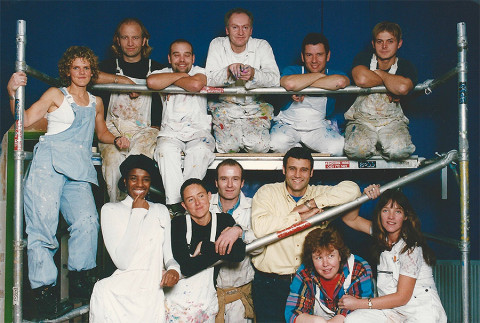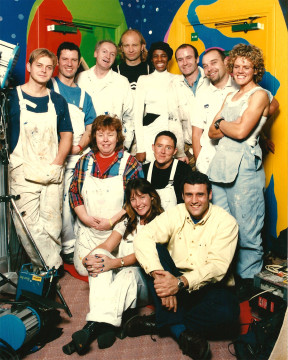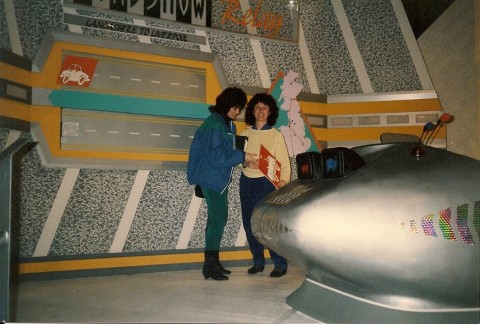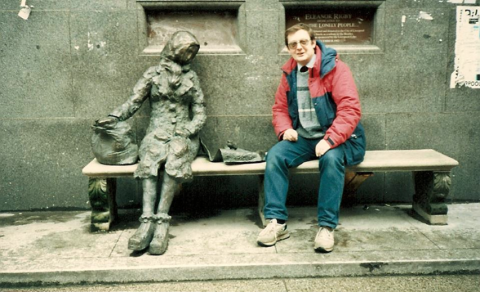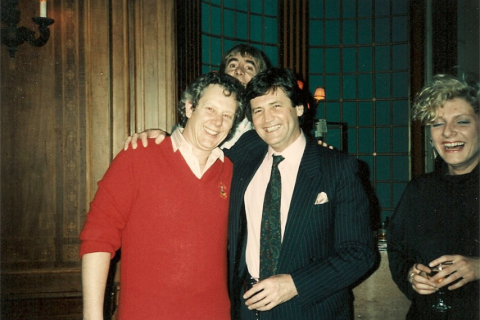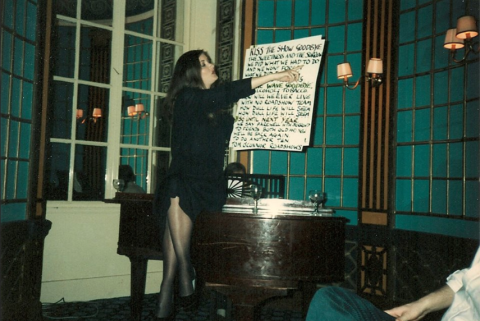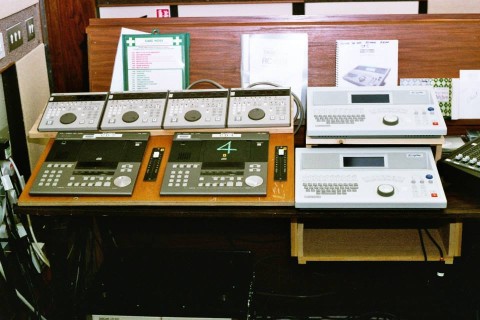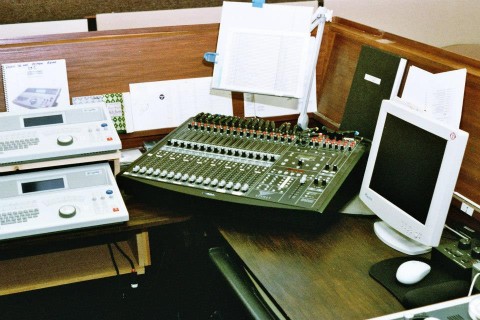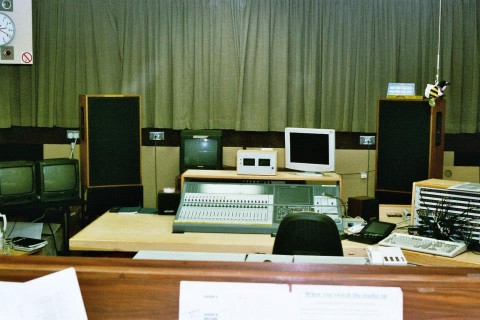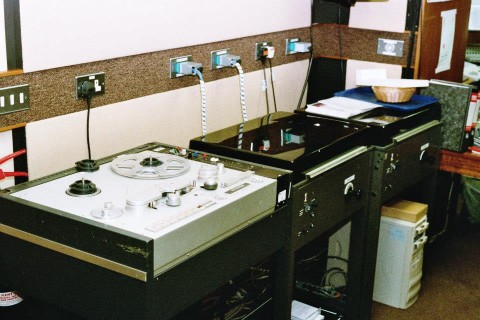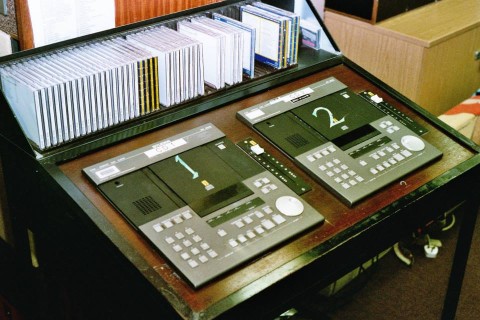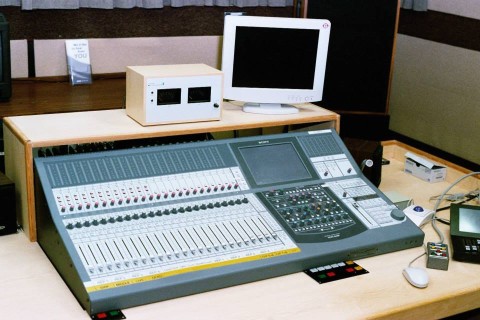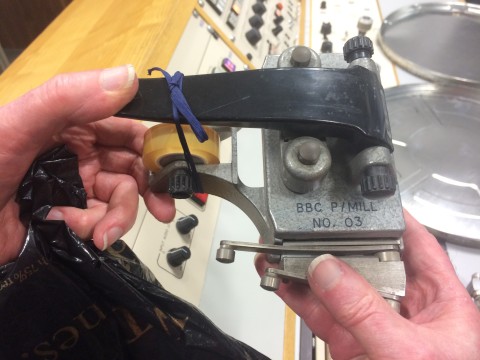Copyright resides with the original holder, no reproduction without permission.
These photos are of the Real Rooms team, during a makeover to coincide with Children in Need day. The show went out on Friday 21st November 1997, and was the last episode of that series. The makeover was of a centre used by special needs children, somewhere in south Birmingham.
Included in the first photo are left to right: back row, Elaine Walker, Jon ?, Richard White, John Gregg, Robert David, ?, front row Beverley ?, Leah ?, Kieran Kelly, Simon Biagi (presenter), Fiona Quigley, Dee Mortimer.
Working on Real Rooms was my first programme as a series producer, with Mark Kershaw as executive producer, and Roger Casstles as Managing Editor. We had an initial commission for 20 programmes, but the series proved very popular and it was recommissioned many times over. I worked on the first 80 programmes, before moving on to other series.
It was one of the first programmes at Pebble Mill to extensively use self shooting by researchers and assistant producers, on Sony VX1000s. Some of the quality was mixed, but it was only through self shooting that the programmes were cost effective. We used to have a full Beta crew for all presenter, Simon Biagi’s pieces to camera, and the opening and reveal, as well as the ‘inspiration’ and ‘shopping’ trips. The self shooting was reserved for the makeover happening in the actual room.
Vanessa Jackson
